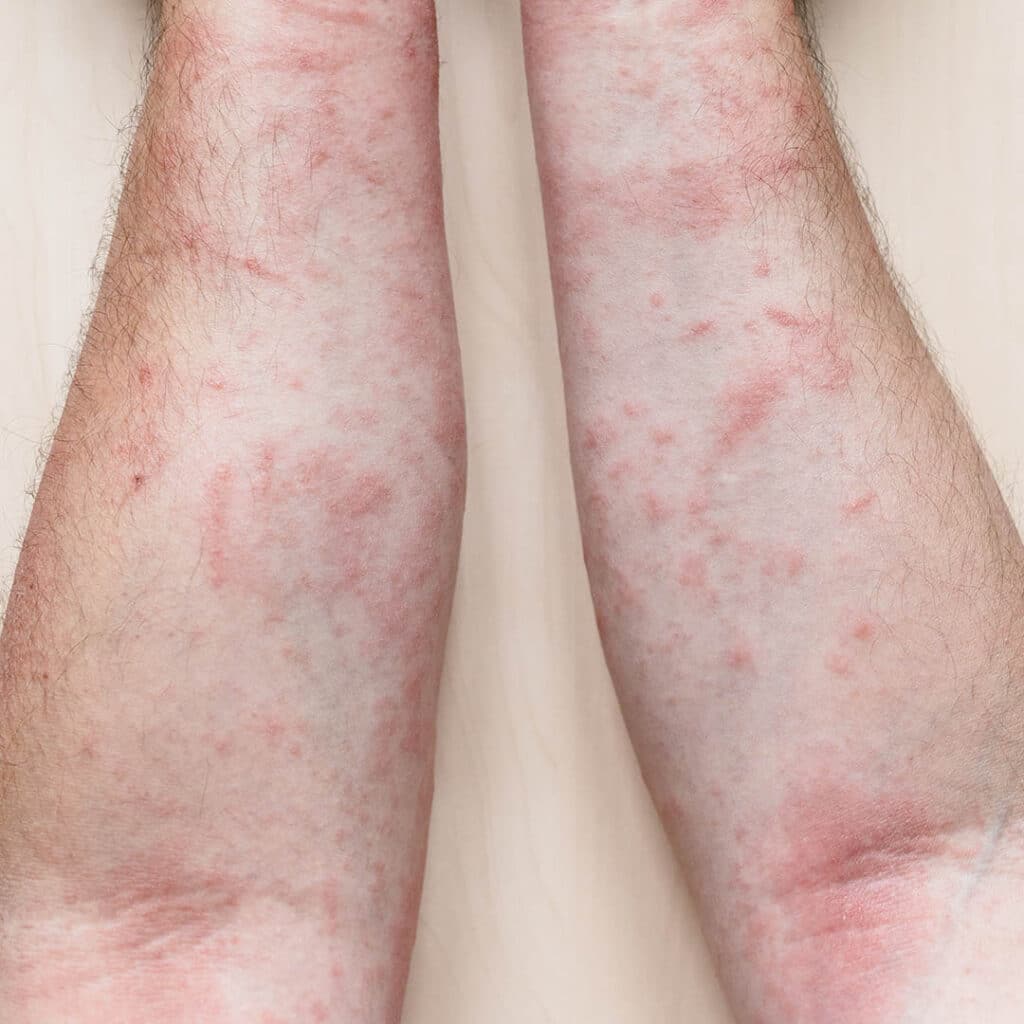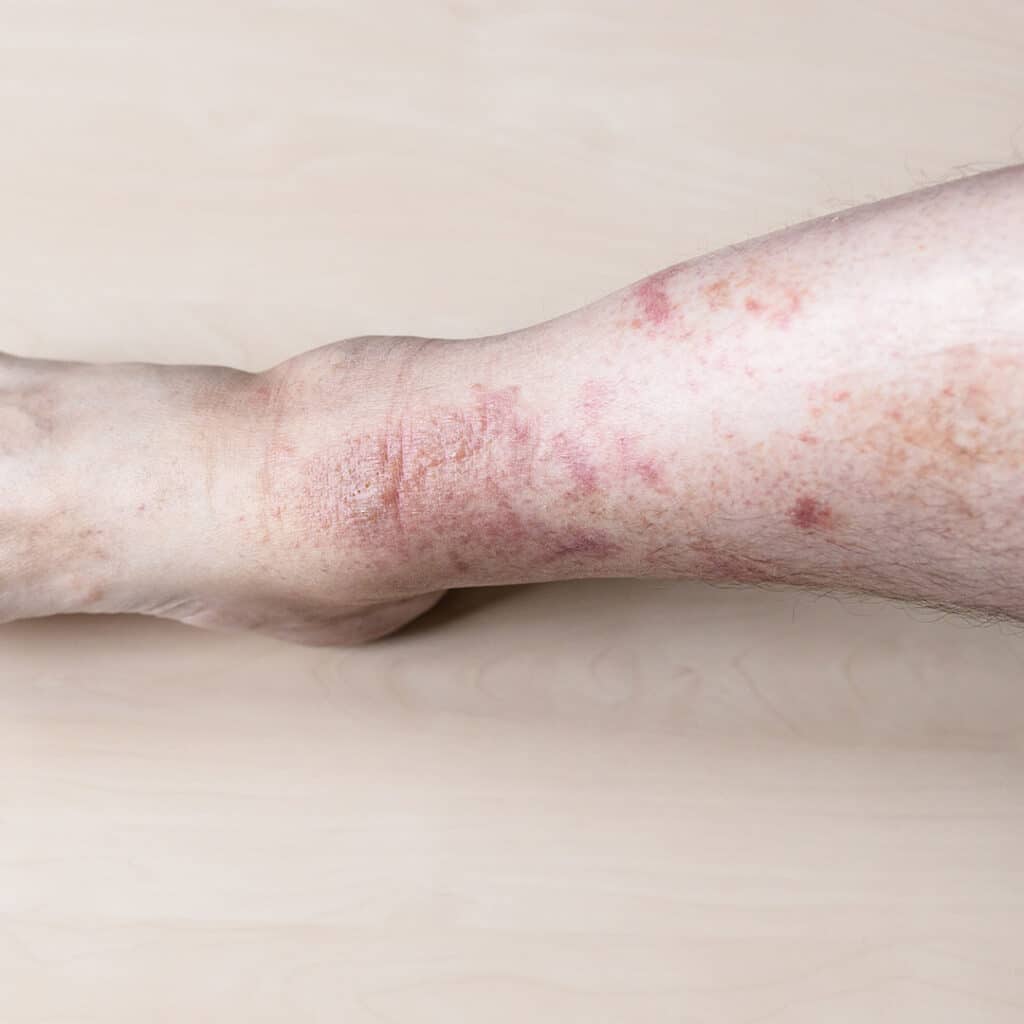
What is Skin Infections?
Skin infections are a type of infection that affects the skin, which is the largest organ in the human body. They can be caused by a variety of microorganisms, including bacteria, viruses, fungi, and parasites. Skin infections can range from mild to severe, and their symptoms and treatment can vary depending on the cause of the infection.
Common symptoms of skin infections include redness, swelling, itching, pain, and discharge. Some skin infections may also cause blisters, open sores, or a rash.
Treatment for skin infections can include antibiotics for bacterial infections, antifungal medications for fungal infections, antiviral medications for viral infections, and medicated creams or ointments for parasitic infections. In some cases, over-the-counter treatments may be sufficient, but in more severe cases, a doctor’s intervention may be necessary.
It’s important to maintain good hygiene practices to reduce the risk of skin infections, such as keeping the skin clean and dry, avoiding sharing personal items, and seeking prompt medical treatment if you have an infection that is not improving with over-the-counter treatments.
Some common types of skin infections include:
- Bacterial infections: These include impetigo, cellulitis, and folliculitis.
- Fungal infections: These include athlete’s foot, jock itch, and ringworm.
- Viral infections: These include warts, shingles, and chickenpox.
- Parasitic infections: These include scabies and lice.
The symptoms of skin infections vary depending on the type of infection, but may include redness, swelling, pain, itching, and discharge. In some cases, skin infections can also cause blisters or open sores.
Treatment for skin infections usually involves antibiotics for bacterial infections, antifungal medications for fungal infections, and antiviral medications for viral infections. In some cases, over-the-counter creams and ointments may be recommended.
It’s important to keep your skin clean and dry, and to avoid sharing personal items like towels and washcloths, to reduce the risk of skin infections. If you have a skin infection that is not improving with over-the-counter treatments, or if you have a weakened immune system, you should see a doctor.

Bacteria

Some bacteria are beneficial to humans, such as those that live in the gut and help with digestion, while others can cause disease. Bacterial infections can occur when harmful bacteria enter the body and multiply, leading to symptoms such as fever, fatigue, and localized symptoms like redness, swelling, and pain. Some common bacterial infections include streptococcal pharyngitis (strep throat), urinary tract infections, and skin infections like impetigo and cellulitis.
Cellulitis
Cellulitis is a bacterial skin infection that affects the deeper layers of skin and the underlying tissues. It typically starts as a red, tender area that spreads and becomes increasingly painful and swollen. Cellulitis is often accompanied by fever and other systemic symptoms, such as fatigue and muscle aches.
Impetigo
Impetigo is a highly contagious bacterial skin infection that affects mostly children. It usually occurs on the face, neck, and arms and is characterized by red sores that break open and form a yellow-brown crust. The sores can be itchy and painful, and can spread to other areas of the body if not treated.
Staph Infections
Staph infections are a type of bacterial infection caused by the Staphylococcus bacteria. Staphylococcus aureus is the most common cause of staph infections, but other species of Staphylococcus can also cause infections.
Viruses

Viruses are tiny infectious particles that can cause a wide range of illnesses in humans, from the common cold to more serious diseases like AIDS and Ebola. Unlike bacteria, viruses cannot grow or reproduce on their own and must infect a host cell in order to survive and multiply.
Once a virus enters the body, it hijacks the host cell’s machinery to make copies of itself, which then spread to other cells and cause illness. The severity of a viral infection can vary widely, from mild to severe, depending on the specific virus, the host’s immune response, and other factors.
Some common viral infections include the flu, the common cold, chickenpox, measles, and human papillomavirus (HPV). Some viral infections can be prevented through vaccination, while others can be treated with antiviral medications that target specific viral enzymes and inhibit the virus’s ability to replicate.
Warts
Warts are small, raised growths on the skin that are caused by the human papillomavirus (HPV). There are many different types of HPV, and some types are more likely to cause warts on certain parts of the body. Common warts, for example, typically appear on the hands and fingers, while plantar warts occur on the soles of the feet.
Shingles
Shingles, also known as herpes zoster, is a viral infection that causes a painful rash on one side of the face or body. The virus that causes shingles is the varicella-zoster virus, which is the same virus that causes chickenpox. After a person has had chickenpox, the virus remains dormant (inactive) in their nervous system for the rest of their life. Later in life, the virus can reactivate and cause shingles.
Cold Sores and Fever Blisters
Cold sores and fever blisters are small, painful, fluid-filled blisters that typically appear around the mouth or on the face. They are caused by the herpes simplex virus (HSV), and are highly contagious. There are two types of herpes simplex virus, HSV-1 and HSV-2, and both can cause cold sores or genital herpes.
Fungi

Fungal infections are often treated with antifungal medications, which can be applied topically or taken orally, depending on the type and severity of the infection. In some cases, over-the-counter antifungal treatments may be effective, while in more severe cases, prescription antifungal medications may be necessary.
Good hygiene practices, such as keeping the affected area clean and dry, wearing breathable clothing, and avoiding close contact with infected individuals, can help prevent the spread of fungal infections and reduce the risk of reinfection. If you have a persistent or worsening fungal infection, it’s important to see a doctor, who can help determine the best course of treatment for your specific condition.
Athlete’s foot
Athlete’s foot, also known as tinea pedis, is a common fungal infection of the skin on the feet, especially between the toes. It is caused by a type of fungus that thrives in warm, moist environments, such as public showers, locker rooms, and swimming pools.
Ringworm
Ringworm, also known as tinea, is a fungal skin infection that causes a circular, red, itchy rash. It can occur anywhere on the body, including the scalp, face, chest, arms, legs, and nails. Ringworm is caused by a group of fungi called dermatophytes, which feed on the keratin in the skin, hair, and nails.
Yeast Infections
Yeast infections are infections caused by a type of fungus called Candida. They can occur in various parts of the body, including the mouth (oral thrush), throat, genital area, and skin. Yeast infections can be caused by a number of factors, including antibiotics, weakened immune systems, and hormonal changes.
Parasites

Parasites are organisms that live on or inside another organism (the host) and derive their sustenance from that host. In the context of human health, parasites can cause a variety of illnesses and infections, ranging from mild to severe.
Parasitic infections can be treated with medications, such as antiparasitic drugs or antibiotics, depending on the specific parasite involved. Preventative measures, such as using insect repellent, cooking meat thoroughly, and washing hands regularly, can also help reduce the risk of infection.
If you suspect you have a parasitic infection, it’s important to see a doctor, who can diagnose the condition and recommend appropriate treatment. Early treatment is important to prevent the spread of the parasite and to minimize the risk of serious health complications.
Lice
Lice are tiny insects that live on the scalp, pubic area, or body and feed on blood. There are three main types of lice that can infect humans: head lice, body lice, and pubic lice.
Scabies
Scabies is a skin condition caused by mites that burrow into the skin and lay eggs, causing intense itching and a rash. The mites that cause scabies are very small, about the size of a pinhead, and they can be difficult to see without a microscope.
Toxoplasmosis
Toxoplasmosis is an infection caused by a parasite called Toxoplasma gondii. The parasite can be found in soil and in the feces of infected cats, as well as in raw or undercooked meat from infected animals.

How are Skin Infections Diagnosed and Treated?
Skin infections are diagnosed by a physical examination of the affected skin and, in some cases, by taking a sample of the infected tissue (skin scraping or biopsy) for laboratory analysis.
The treatment for skin infections depends on the type of infection and the severity of symptoms. Some common treatments for skin infections include:
Antibiotics: For bacterial skin infections, such as impetigo, cellulitis, and staph infections, antibiotics are the primary treatment. Antibiotics can be applied topically or taken orally.
Antiviral drugs: For viral skin infections, such as cold sores and shingles, antiviral drugs can help reduce the severity and duration of symptoms.
Antifungal drugs: For fungal skin infections, such as athlete’s foot and ringworm, antifungal drugs can be applied topically or taken orally.
Parasiticides: For parasitic skin infections, such as scabies and lice, prescription creams or lotions can be used to kill the parasites and their eggs.

